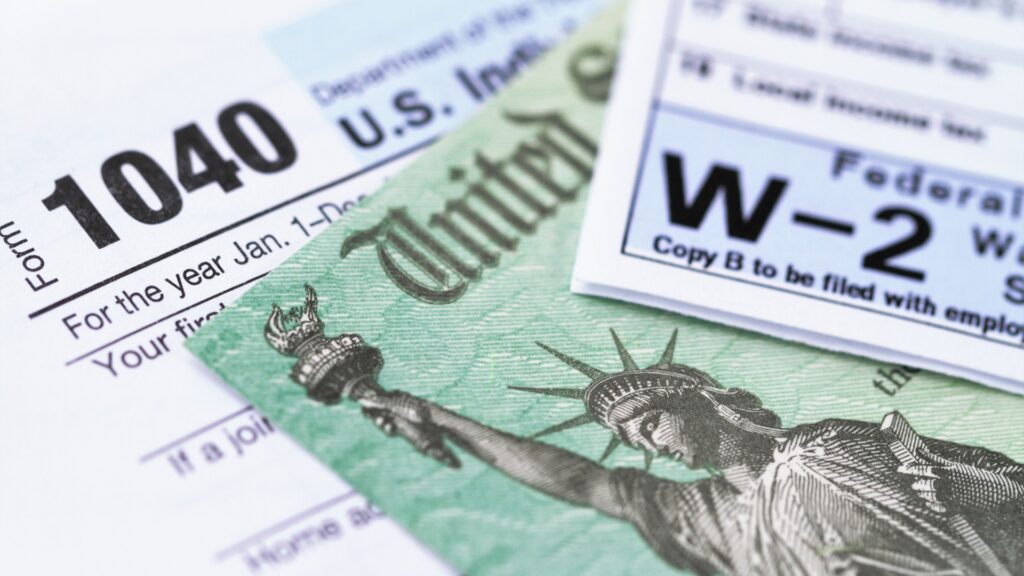One area of tax strategy that often piques the interest of those investing in short-term rentals is what’s known as the short-term rental (STR) tax loophole. This provision, particularly beneficial for high W2 income earners who can invest time to self-manage a rental property, offers an opportunity to save significantly on federal taxes.
In this article, we’ll discuss how this tax strategy works, the requirements to meet the IRS’s Material Participation Test, and how self-management of your STR can set you up for success.
Plus, we’ll introduce you to Ben, our hypothetical yet realistic real estate investor, and show you how his smart tax strategy enabled him to buy and self-manage a short-term rental condo in Waikiki that earns him amazing cash-on-cash returns.
Meet Ben below!
BONUS: We’ll share Ben’s investment calculator so you can plug in your income, investment, and other assumptions to begin the due diligence of making your STR dream a reality.
Understanding the Short-Term Rental Tax Loophole vs. Real Estate Professional Status
The short-term rental tax loophole presents an advantageous tax treatment for income derived from STR properties, provided certain conditions are met.
This tax strategy involves using short-term rental properties to generate income while simultaneously offsetting taxable income through the deduction of depreciation (a non-cash expense) and other expenses. The unique aspect of this approach is its exemption from the “passive loss limitation rules” which usually apply to rental properties, potentially offering tax benefits similar to those of the Real Estate Professional Status (REPS).
This provision serves as a boon for high-income-earning property owners who don’t meet the stringent criteria for REPS. It does so by redefining rental activity and altering the taxation process for the income it generates.
To understand this loophole, it’s critical to distinguish between passive and non-passive activity. If your rental activities are classified as non-passive, they fall under the purview of this loophole. The federal tax code delineates the standards for demonstrating that income produced by a rental property is non-passive.
Here are the key conditions to meet the passive income exception, according to the IRS:
- The average stay of a guest does not exceed seven days.
- The average period a guest occupies the property as a rental is 30 days or less, and the owner offers basic services comparable to those provided by a hotel.
- Owners deliver exceptional personal services to prepare the property for use.
- Property rentals are deemed incidental to the non-rental activity of the owner.
- Use of the property is accessible during specific business hours and is not exclusive to any one guest.
- Any provision of the property for use in activities conducted by a partnership, S-corp, or joint venture in which the property owner has an interest is not considered a rental activity.
So, what does this mean in layman’s terms? Essentially, the short-term rental tax loophole can lead to substantial tax savings if you qualify.
By self-managing your vacation rental (more on that below), you can demonstrate non-passive material participation, without necessitating you to become a full-time real estate professional.

Decoding the Material Participation Test
While the STR Loophole is more accessible than REPS, it doesn’t completely absolve the investor from involvement. The IRS still insists on material participation in the rental activity.
The Material Participation Test is a set of seven criteria established by the IRS to determine whether an individual is actively involved in a trade or business. These criteria are designed to prevent taxpayers from claiming tax benefits for activities they’re not materially participating in.
To pass this test, you must meet at least one of the seven criteria defined by the IRS during the tax year. In the context of STRs, the three most commonly met criteria include:
- Participating in the activity for more than 500 hours,
- Having your participation constitute virtually all of the participation in the activity, or
- Participating in the activity for more than 100 hours when no other individual participates more.
Importance of STR Self-Management
For high-income earners looking to leverage this tax strategy, self-managing the rental property is a critical component. As an investor, you must show material participation and the easiest way to do that is through self-management.
If your interest in owning a vacation rental property hinges on a desire to hire a property manager or outsource much of the operational tasks required to list, book, host, and turnover your place, then rethink your ability to meet the material participation criteria.
Thankfully, self-managing an STR is simpler than ever thanks to several easy-to-use software tools. Implementing a time-saving, cost-reducing, effective short-term rental tech stack will help you satisfy the material participation requirements while also making the management of your STR an efficient and automated process.
Why Invest in 2024? Phase-out of Depreciation for Short-Term Rentals
If you’ve toyed with the idea of investing in a short-term rental, now may be the best time to act.
Since 2018, the bonus depreciation rate for STRs and other business activities had been set at 100%. However, 2022 marked the final year of this 100% bonus depreciation, with a phased approach to reducing the percentage over five years. Here’s how that looks:
- In 2023, the bonus depreciation decreased to 80%.
- In 2024, the rate reduces to 60%.
- By 2025, the bonus depreciation will drop to 40%.
- In 2026, the rate diminishes to 20%.
- In 2027, the bonus depreciation is slated to disappear entirely.
While changes and extensions are possible, this is the current trajectory. It’s vital to note that the STR depreciation loophole itself is not under threat and may remain intact. However, the 100% bonus depreciation is naturally phasing out according to existing laws, diminishing the impact of the strategy the longer you wait to get in the game.

Utilizing Depreciation in Your Short-Term Rental Tax Strategy
Even as bonus depreciation diminishes, there remains an opportunity to depreciate portions of your property at 5 or 15 years instead of the standard 39 years, presenting another avenue for savings.
Engaging a skilled, demonstrated real estate professional can help you strategically utilize depreciation for your short-term rental. They will guide you through the following pivotal steps:
- Cost Segregation Study: They will advocate for the execution of a cost segregation study on your property. This is an essential first step.
- Reclassification of Property Components: The objective of the cost segregation study is to reclassify certain components of your property, transitioning them from a 39-year life (the standard depreciation life for a short-term rental property) to 5 and 15 years. This applies to tangible personal property, land improvement property, and qualified improvement property.
Understanding the significance of this strategy is crucial. The potency of this tactic lies in the fact that 5 and 15-year property components typically constitute 20-30% of a property’s purchase price. This strategy is powerful because your losses are non-passive, and that tax loss can be utilized to offset taxes on your W2 income.
The short-term rental tax loophole presents a unique tax-saving opportunity for high W2 income earners considering investing in real estate, provided they can actively self-manage their rental properties. As always, it’s wise to consult with a tax professional or real estate attorney to understand how this strategy could impact your specific situation.
Meet Ben and His Tax-Friendly Short-term Rental in Waikiki
Ben is a successful doctor interested in becoming a short-term rental owner-operator. With the right transaction structure, careful planning, and a willingness to self-manage his STR property, Ben can eliminate (or rather defer until death*) his federal tax bill.
See how he does it and try Ben’s calculator for yourself!
Ben makes $480K a year in W2 income. His federal tax bill is $135K with a maximum tax bracket of 37%. (see tab: W2 Income)
Ben purchases a $1.7M Waikiki condo with a $340K down payment. (see tab: Tax Brackets)
Without the STR tax loophole, this is not a great investment. Ben is bringing in about $23K a year after interest payments – only about 6% cash on cash return.

Let’s see how we can help Ben.
We’re going to make some reasonable assumptions about the rental income and operating costs. (see tabs: Investment and Rental Performance)
- Conservative rental income is $143K based on $490 per night with 80% occupancy
- Conservative operations costs are $31K
- Net operating income is $111K
- Mortgage interest is $88K
- Cash flow is $23K
Remember: A crucial point in this tax strategy is understanding that different parts of the property depreciate on different schedules and that the accelerated depreciation applies to the structure and elements other than the land value. (see tab: Depreciation)
What does Ben do?
Ben hires a qualified firm to conduct a cost segregation analysis that finds that $680K of his property is eligible for bonus depreciation. In 2024, Ben is allowed to depreciate 60% of that $680K ($480K).
Ben can also depreciate the rest of his property value according to straight-line depreciation over 39 years. This equates to $1.02M / 39 years for a regular depreciation of $26,000.
Factoring in depreciation, Ben is amassing a $411K “paper” loss for the 2024 year. This includes his bonus depreciation of $480K + regular depreciation of $26K – operating cash flow of $23K.
This loss (mostly depreciation) offsets Ben’s other W2 income, resulting in a new AGI of $69K and a federal tax bill of only $4.5K, down from $135K – a savings of $130K!
For the first year, this brings Ben’s cash-on-cash return to a staggering 42%, up 36 points from the measly 6% return he started with. (see tab: Tax Savings)
Ben was able to take advantage of this windfall opportunity because he self-manages his rental property and meets the IRS’s material participation test requirements. He doesn’t pay a property manager, invests his time and some money in a valuable tech stack, and operates his short-term rental efficiently and successfully – all while still practicing medicine as his “day job.”
Congratulations, Ben!
Check out Ben’s calculator and plug in your numbers and assumptions to see how you might also make STR ownership a revenue-generating reality.
*It is important to note that bonus depreciation creates a tax deferral, not a pure credit. In the event Ben chooses to sell the condo, he would be liable to pay taxes on the depreciation, but never fear! There are ways to defer that tax bill too, like buying another property in a 1031 exchange.
Disclaimer: This article and the calculator tool are for informational purposes only and should not be relied upon as tax, financial, or legal advice. Always consult with a tax professional and/or real estate attorney for advice on your specific situation.







